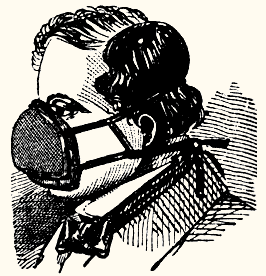Worker’s Memorial Day is dedicated to those who lost their lives on the job. Every year, on April 28, people across the country and around the world pay their respects to the thousands killed each year on the job and the millions more who suffer serious occupational injuries and illnesses on the job and recognize the impact these tragic losses have on families, co-workers, and communities. According to Wikipedia, in 1989 the AFL-CIO declared April 28 Worker's Memorial Day. April 28 is the day the Occupational Safety and Health Act of 1970, went into effect and the day the Occupational Safety and Health Administration (OSHA) was formed in 1971. In 1991, the Canadian parliament passed an Act respecting a National Day of Mourning for persons killed or injured in the workplace, making April 28 an official Workers' Mourning Day. In 2001 the International Labour Organization (ILO), part of the United Nations (UN), recognized Workers' Memorial Day and declared it World Day for Safety and Health at Work, and in 2002 the ILO announced that April 28 should be an official day in the UN system.
 |
| According to ADAO, over 10,000 people are dying from asbestos exposure each year! |
As we see all the events held and all the statements made this day one theme seems to repeat over and over, workplace injuries and illnesses remain unacceptably high, especially the ones that happen now! Every theme is to reduce injuries, but very few if any mention the biggest killer occupational disease. The Center for Construction Research and Training (CPWR) is one of the few organizations that even discusses occupational disease. But don't look for asbestos exposure on that website, for example, the construction worker exposure control database that they manage only lists silica, noise, welding fumes, and lead. What about asbestos, mercury, or polychlorinated biphenyls? But you can find oodles of information on falls. Let's look at OSHA and how they handle occupational diseases. They are the prime regulatory agency for occupational diseases. Secretary of Labor Marty Walsh, OSHA is one of the agencies under the Department of Labor, yesterday issued a statement on Workers Memorial Day it is much longer than the following excerpt, but this statement and what it, and the whole statement, is lacking makes my point:
“In the past year, nearly 5,000 workers left home for work and did not return. None knew that going to work would cost them their lives. While each life lost is a tragedy, those taken in incidents that might have been prevented – had their employers followed required safety and health standards – are especially painful for their families, their co-workers and friends, and their communities."
No recognition for workers who died from their job, but died after they were no longer working, though in Secretary of Labor Marty Walsh's video presentation he mentions his father being exposed to asbestos and having lung problems. Even in the Department of Labor's video on the Worker Memorial Day Program, only Assistant Secretary for Labor Chris Williamson the director of the Mine Safety and Health Administration (MSHA) even mentions occupational diseases when he mentions silica.
While in the United Kingdom (UK) a new permanent memorial commemorating the lives of all the people who died as a result of exposure to asbestos has been unveiled in Barking and Dagenham at a special remembrance ceremony yesterday on International Workers Memorial Day. The AFL-CIO annually releases a report "Death on the Job: The Toll of Neglect" that details the current state of safety and health protections for America’s workers. The 31st edition of the report states:
"Workplace hazards kill and disable approximately 125,000 workers each year—4,764 from traumatic injuries, and an estimated 120,000 from occupational diseases. Job injury and illness numbers continue to be severe undercounts of the real problem."
This report indicates that occupational diseases are 24 times more likely to occur than traumatic injuries! Realize we are not saying safety is not important, but considering asbestos, silica, and welding fume exposures are still going on, just to name a few what is being done for these workers! On May 2-6, 2022 OSHA will sponsor a National Safety Stand-Down to Prevent Falls in Construction. Fatalities caused by falls from elevation continue to be a leading cause of death for construction employees, accounting for 351 of the 1,008 construction fatalities recorded in 2020 (BLS data). If occupational diseases are typically 24 times more likely, then we would argue that falls are not the leading cause of death in construction. Why is there no stand-down day for these occupational diseases? Except for heat illness or noise, there are no stand-down days for the rest of the occupational diseases. According to OSHA's statistics, from October 2020 to September 2021 OSHA performed 15 inspections related to the construction asbestos standard (1926.1101) for 80 citations while for the same period OSHA performed 5,325 inspections with 5,463 citations for the duty to have fall protection in the construction industry (1926.501).
 |
| Linda Reinstein of ADAO and Angelo Garcia, III of FED at the PACNY Environmental Conference |
There is one bright cloud regarding recognizing those workers who die related to asbestos exposure but because they died after their retirement. The Asbestos Disease Awareness Organization (ADAO) is the largest independent asbestos victims’ organization in the United States. Founded in 2004 to give asbestos victims and concerned citizens a united voice, to raise public awareness about the dangers of asbestos exposure, and to work towards a global asbestos ban. The ADAO sponsors an annual International Conference on Asbestos Awareness and Prevention, and has annually (this year is the 17th) lobbied the U.S. Senate to pass a resolution to designate April 1- 7 as "National Asbestos Awareness Week", which coincides with "Global Asbestos Awareness Week". Linda Reinstein is one of the founding members of ADAO and has told her story regarding Alan's, her husband, exposure to asbestos. It's these stories that don't make it into the injury and illness statistics. These stories are the ones that are being left out on Worker's Memorial Day and we must do better!















